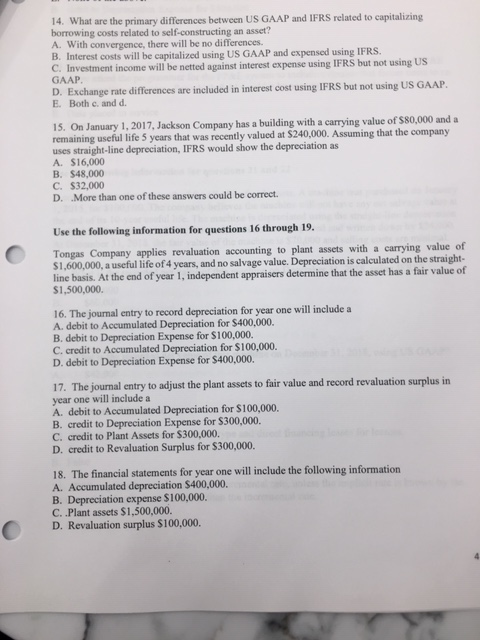
Capitalization Of Borrowing Costs Ifrs Update Impacts Both
Capitalisation as the actual borrowing costs incurred on that borrowing during the.Borrowing costs are interest and other costs that an entity incurs in connection with the borrowing of funds. Financing fees exampleWhen it comes to determining the cost of your assets, most standards ask to include all directly attributable items.Borrowing costs that are directly attributable to the acquisition. Below is an example of debt issuance costs treatment pre- and post-ASU 2015-03. The update impacts both private and public companies and applies to term loans, bonds and any borrowing that has a defined payment schedule. Amortization of debt issuance costs shall be reported as interest expense.

Exchange differences on borrowings in foreign currencies, but only those representing the adjustment to interest costs.However, IAS 23 is pretty silent on some types of expenses and there are doubts whether they are borrowing costs or not, for example: Finance charges on finance leases under IAS 17 and Interest expenses (refer to the effective interest method under IFRS 9/IAS 39) Normally, if an asset takes more than 1 year to be ready, then it would be qualifying.IAS 23 specifically mentions 3 types of borrowing costs that can be capitalized: It can also include some inventories or intangibles, too!But what is a “substantial period of time”?Well, that’s not defined in IAS 23, so here you need to apply some judgment.
Less investment income: CU 800 000 x 2% x 2/12 = CU 2 667 Interest expense: CU 1 000 000 x 5% x 7/12 = CU 29 167Note: this is very simplified calculation and if the loan is repayable in installments, then you need to take the real interest incurred (by the effective interest method). DEF temporarily invested CU 800 000 borrowed money during the months of June and July 20X1 at the rate of 2% p.a.What borrowing cost can be capitalized in 20X1? (Assume all interest was paid).Although the funds were withdrawn on 1st May, the capitalization can start only on 1st June 20X1 when all criteria were met (the construction had not started until 1st June). The purpose of this loan was to finance a construction of a production hall.The construction started on 1 June 20X1. Gains or losses arising from early repayment of borrowings, etc.Here again, we need to apply our knowledge from other IFRS standards and sometimes, make a judgment, too.IAS 23 differentiates between capitalizing borrowing costs on general borrowings and specific borrowings.If you borrowed some funds specifically for the acquisition of a qualifying asset, then the capitalization is easy:You simply capitalize the actual costs incurred less any income earned on the temporary investment of such borrowings.On 1st May 20X1, DEF took a loan of CU 1 000 000 from a bank at the annual interest rate of 5%. Dividends payable on preference shares (or other types of shares classified as liabilities)
Borrowing costs for the new machinery in 20X1 = CU 60 000 x 7.31% x 11/12 + CU 25 000 x 7.31% x 4/12 = CU 4 021 + CU 609 = CU 4 630.The hottest questions in capitalizing borrowing costAfter we know the basics, let me give you my opinion on 3 the most common and often questions I get in relation to capitalizing borrowing cost.I receive these questions quite often, so let me shed some light there.Question #1: Can you capitalize interest cost in the cost of inventories?In most cases, inventories do not take a substantial period to get ready and in this case no, you cannot capitalize.But here, there are some examples of inventories that can take a substantial period to complete: Weighted average rate = (8% x 130 000 /(130 000+50 000)) + (5.5% x 50 000/(130 000+50 000)) = 5.78%+ 1.53% = 7.31% And debenture stock were taken for no specific purpose and KLM used them to finance general spending and the construction of a new machinery.KLM used CU 60 000 for the construction of the machinery on 1 February 20X1 and CU 25 000 on 1 September 20X1.What borrowing cost should be capitalized for the new machinery?You ignore bank loan at 6% p.a., because it is a specific borrowing for another asset.Only general borrowings relate to the financing of the new machinery and therefore, we need to calculate the capitalization rate: Was taken in July 20X1 to finance the construction of a new production hall (construction began on 1 March 20X1).The bank loan at 8% p.a.
...


 0 kommentar(er)
0 kommentar(er)
